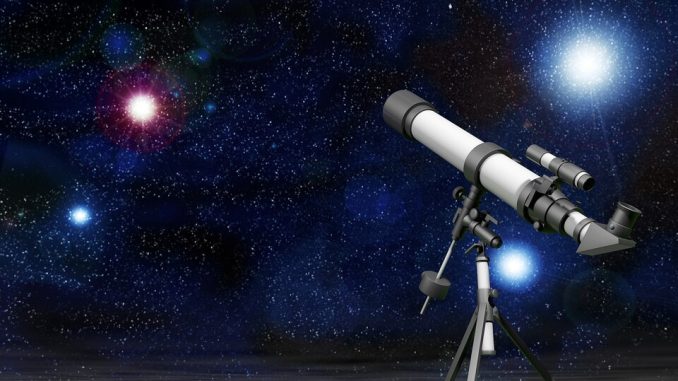
Space telescopes have illuminated the universe’s marvels and secrets. Astronomy has been forever changed by the Hubble Space Telescope, which orbited Earth for almost 30 years. As its mission nears its peak, the space telescope community excitedly anticipates the launch of the James Webb Space Telescope (Webb), the leading cosmic exploration telescope. However, Webb’s expedition illustrates the difficulties of astronomy.
Current Giants: Hubble And Webb:
Since 1990, the Hubble Space Telescope has been a scientific wonder. It took stunning photographs of faraway galaxies, nebulae, and planets, advancing our knowledge of the cosmos. Astronomy has changed thanks to Hubble’s ultraviolet, visible, and near-infrared capabilities. Its scientific contributions include monitoring the universe’s expansion, detecting exoplanets, and researching distant planets’ atmospheres. The James Webb Space Telescope (Webb), commonly called Hubble’s successor, advances our understanding of space.
It provides unique insights into the universe’s most distant and oldest objects by operating in the infrared range. Webb will reveal the universe’s initial galaxies, stars, planetary systems, and exoplanet atmospheres, which may inform habitability or life. Cost overruns and timetable delays have plagued Webb’s launch. Despite his struggles, Webb represents the constant quest for cosmic knowledge and space telescopes’ legacy.
Upcoming Space Telescopes:
Three ambitious space telescope missions, the Nancy Grace Roman Space Telescope, the Wide Field Infrared Survey Telescope (WFIRST), and the Advanced Technology Large-Aperture Space Telescope, represent the future of space telescopes.
Launching in the mid-2020s, the Nancy Grace Roman Space Telescope will explore the universe’s deepest regions. This telescope, named for a space-based astrophysics pioneer, seeks to understand dark matter, dark energy, and the cosmic web. Astronomers can map dark matter distribution and study cosmic expansion using its vast range of views and modern instrumentation.
In the late 2020s, the Wide Field Infrared Survey Telescope (WFIRST) will expand on Hubble and Webb. It will accurately measure the universe’s expansion rate to investigate dark energy. WFIRST will use gravitational microlensing to find and describe Milky Way exoplanets.
The ambitious Advanced Technology Large-Aperture Space Telescope (ATLAST) would be more potent than Webb. With a bigger aperture, ATLAST will see everything from the earliest galaxies to exoplanet atmospheres, revolutionizing our understanding of the universe’s beginnings and the possibility of life beyond Earth. These planned telescopes represent the progression of space-based astronomy, promising significant findings in cosmology and planetary research.
Breakthrough Technologies:
Future space telescopes depend on a spectrum of breakthrough technologies to improve their capabilities and advance astronomical research. Advanced mirror technologies are crucial. These advanced mirrors collect and concentrate light with unparalleled accuracy, allowing telescopes to discover fainter objects, study distant galaxies, and explore exoplanets.
Modern detectors and spectrographs complement sophisticated mirrors. Astronomers use these devices to capture and analyze celestial light to determine the composition, temperature, and chemistry of distant planets and galaxies. Space telescopes may give vital data for scientific advances by boosting their sensitivity and efficiency.
Exoplanet imaging and characterization devices are fascinating breakthroughs in space-based astronomy. These instruments are meant to detect habitability, biosignatures, and direct imaging of exoplanets. These tools may solve the age-old issue of whether we are alone in the cosmos by pushing technology. These revolutionary technologies are changing space-based astronomy, opening new frontiers of discovery and comprehension.
Expanding Scientific Horizons:
New space telescopes and breakthrough technologies are rapidly extending astronomy’s scientific boundaries. these telescopes will investigate the universe’s deepest secrets.
Dark matter and dark energy are fascinating frontiers. These mysterious components make up most of the cosmos, yet cosmology still doesn’t understand them. Future telescopes will map dark matter distribution, examine dark energy’s acceleration of the universe’s expansion, and better comprehend these basic cosmic processes.
Astronomy is also about to revolutionize exoplanet research. The hunt for habitable planets and life is intensifying. Advanced exoplanet imaging and characterization telescopes will study planetary atmospheres and habitability. These techniques help us solve the age-old issue of whether life exists elsewhere in the universe.
Challenges And Funding:
Space telescope development and operation are complex. Designing, developing, launching, and operating cutting-edge devices in space is difficult. Technical complexity frequently exceeds our technological capabilities. These equipment demand extreme accuracy, and space organizations must deal with difficulties like telescope thermal stability and space environment resistance.
Budgetary issues may need fixing. Space telescope missions are expensive, and financing them takes time. Cost overruns, like those of the James Webb Space Telescope, have raised questions about the practicality and sustainability of such projects. Managing enormous funds and meeting scientific goals is difficult.
International cooperation may solve some of these issues. International space agencies and research organizations are collaborating on space telescope projects. Collaborative endeavours share costs and skills, enabling ambitious aims that a single company cannot achieve. Such alliances are crucial to scientific progress and astronomical discovery dissemination.
Space telescopes need ongoing financing. These missions must have governmental and commercial sector support to realize their scientific potential. Researching the universe is a joint enterprise, and investing in the instruments that allow us to make revolutionary discoveries is an investment in humanity’s knowledge of the universe.
The Future Beyond Webb: Innovative Concepts
As the Webb launches, space telescopes’ future continues. Innovative ideas are being proposed and developed to advance space-based astronomy. Large UV/Optical/IR Surveyor is one example. LUVOIR offers a large-aperture telescope that can see the cosmos in ultraviolet, visible, and infrared light. Multi-wavelength capabilities will transform our knowledge of the universe. It will enable high-resolution photography of planets surrounding other stars, thorough analyses of neighbouring galaxies, and planetary biosignature searches.
Habitable Exoplanet Observatory is another innovative idea. HabEx is dedicated to finding habitable exoplanets and alien life. HabEx may image exoplanet atmospheres and surfaces in high resolution using modern technologies. These novel ideas represent the future of space-based astronomy. They reflect our rising objectives and constant search for knowledge. These telescopes might lead to groundbreaking discoveries that change our understanding of the cosmos and ourselves beyond Webb.
Conclusion
Space telescopes’ future is a thrilling cosmic voyage. The legacy of Hubble and Webb’s potential has just begun. Future space telescopes powered by breakthrough technology will expand our knowledge of the cosmos. To succeed, these missions must overcome technical and financial challenges with drive and teamwork. Future innovations like LUVOIR and HabEx are beyond Webb. These groundbreaking telescopes might transform our knowledge of the cosmos and solve some of science’s most fundamental problems.






Leave a Reply